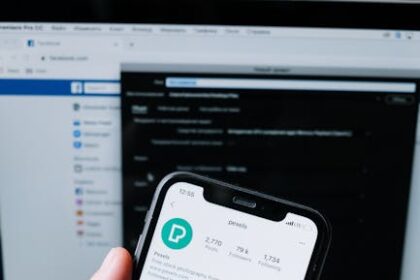Navigating iOS 14 Changes in Facebook Ads
The digital advertising landscape underwent a seismic shift with the introduction of Apple’s iOS 14.5 and its App Tracking Transparency (ATT) framework. This fundamental change, rooted in heightened consumer privacy concerns, directly impacted how digital marketers, particularly those reliant on Facebook Ads (now Meta Ads), collect, analyze, and leverage user data. Understanding the nuances of these alterations and implementing strategic adaptations is no longer optional but a critical imperative for maintaining campaign performance and measuring return on advertising spend (ROAS).
Understanding the Core Problem: Apple’s ATT Framework and Its Ramifications
At its heart, the iOS 14.5 update introduced the App Tracking Transparency (ATT) framework, requiring apps to explicitly ask users for permission to track their activity across other apps and websites. This request manifests as a pop-up prompt, presenting users with a clear choice: “Ask App Not to Track” or “Allow.” The vast majority of users, when given this choice, opt out of tracking, leading to a significant reduction in the availability of granular, user-level data that Facebook’s advertising ecosystem historically relied upon.
Apple’s motivation behind ATT is ostensibly rooted in strengthening user privacy. By empowering users to control their data, Apple aims to provide a more transparent and secure digital experience. However, for businesses heavily invested in performance marketing, especially those using Facebook Ads for customer acquisition and retargeting, this shift created immediate and profound challenges. The traditional models of precise audience targeting, detailed conversion measurement, and robust attribution became inherently compromised.
Facebook, heavily reliant on the iOS ecosystem for a substantial portion of its ad revenue, was directly in the crosshairs. Its ad platform’s efficacy hinges on its ability to track user journeys, from ad click to conversion, across various apps and websites. With ATT, this cross-app and cross-website tracking became severely limited, impacting everything from ad personalization to conversion reporting. This spurred Facebook to introduce Aggregated Event Measurement (AEM) and heavily promote the Conversion API (CAPI) as solutions to mitigate data loss.
Furthermore, Apple introduced SKAdNetwork, a privacy-centric attribution framework designed for app install campaigns. SKAdNetwork allows app developers to receive post-install conversion data without compromising user privacy, as it aggregates data and limits the granularity of individual user data. While beneficial for privacy, SKAdNetwork offers limited visibility and slower reporting compared to traditional SDK-based attribution, presenting a new set of challenges for app advertisers.
Key Changes Introduced by iOS 14.5+ Impacting Facebook Ads
The ATT framework triggered a cascade of changes within the Facebook Ads platform, forcing advertisers to rethink their strategies from the ground up. These changes fundamentally altered how data is collected, aggregated, reported, and utilized for optimization.
1. Data Aggregation and Reporting Limitations:
The most significant impact revolves around data collection and the granularity of reporting.
- 8-Event Limit per Domain: Under AEM, each verified domain is limited to a maximum of eight conversion events that can be optimized for. This forced advertisers to prioritize their most critical conversion actions, abandoning the previous flexibility of tracking numerous events. Facebook automatically configures standard events (like Purchase, Add to Cart, View Content) but advertisers must manually configure custom events and prioritize all selected events. Only the highest priority event that a user triggers will be reported back to Facebook, meaning if a user adds to cart and then purchases, only the purchase event (if higher priority) will be reported.
- Aggregated Event Measurement (AEM): This is Facebook’s framework designed to comply with Apple’s privacy policies. AEM aggregates conversion events from iOS 14.5+ users, making it impossible to attribute individual conversions to specific users. Instead, data is reported in an aggregated and anonymized fashion, reducing the precision traditionally available.
- Delayed Reporting: Conversion data from iOS 14.5+ users can be delayed by up to 72 hours. This delay significantly hampers real-time optimization, making it challenging for advertisers to react quickly to campaign performance fluctuations or to conduct rapid A/B tests.
- Reduced Granularity: Detailed breakdowns like age, gender, device type, or region are often no longer available for conversions from opted-out iOS users. This loss of granular demographic and behavioral data makes it harder to understand audience segments performing well and refine targeting.
- No Real-time Data for Conversion Events: The absence of real-time data means performance metrics require a longer look-back period to stabilize, complicating daily monitoring and immediate decision-making.
2. Attribution Window Changes:
Facebook introduced new default attribution windows in response to iOS 14.5, moving away from longer windows that could attribute conversions to clicks or views further back in time.
- Default 7-Day Click and 1-Day View: The default attribution setting for all new and existing ad sets became a 7-day click and 1-day view attribution window. This means a conversion will only be attributed to a Facebook ad if it occurs within 7 days of someone clicking the ad or within 1 day of someone viewing the ad without clicking.
- Removal of Longer Windows: Previously available attribution windows (e.g., 28-day click, 28-day view) were largely removed or deprecated for most campaign types, forcing advertisers to focus on more immediate conversion impacts. This shift impacts how ROAS is calculated and perceived, as fewer conversions may be directly attributed to Facebook.
3. Audience Targeting Limitations:
The ability to build and target highly specific audiences was heavily impacted.
- Smaller Custom Audiences (Website Visitors, App Users): With less user-level data from iOS devices, the size and accuracy of custom audiences based on website pixel events (e.g., website visitors, Add to Cart, Purchase) significantly decreased. This made retargeting campaigns less effective and reaching specific segments more challenging.
- Lookalike Audience Impact: Lookalike audiences, built on the foundation of custom audiences, also saw reduced efficacy. While they still function, the quality of the seed audience (the custom audience they are based on) can be compromised by data loss, potentially leading to less precise lookalike populations.
- App-Based Audience Challenges: For app advertisers, creating custom audiences based on app events became more complex due to the limitations of SKAdNetwork and general data privacy constraints.
4. Campaign Optimization Challenges:
Optimizing campaigns for specific outcomes became more nuanced.
- Value Optimization Limits: For e-commerce businesses, optimizing for “Value” (which aims to maximize ROAS by showing ads to people likely to make higher-value purchases) became less effective due to the aggregated and delayed nature of value-based data from iOS users. This limitation pushed advertisers towards optimizing for broader conversion events, like “Purchase,” rather than specific value tiers.
- Challenges with App Campaigns (AEO, VO): App Event Optimization (AEO) and Value Optimization (VO) for mobile app installs and in-app events faced significant hurdles. The limited data from SKAdNetwork meant that Facebook had less granular information to optimize app campaigns effectively, potentially leading to less efficient ad spend for app marketers.
5. Measurement and Attribution Transformation:
The entire paradigm of measuring success shifted from precise user-level attribution to a more probabilistic, aggregated approach.
- Shift from User-Level to Aggregated Data: Advertisers could no longer precisely track an individual’s journey from ad interaction to conversion across the entire digital ecosystem. The focus shifted to understanding overall campaign performance based on aggregated, anonymized data provided by AEM.
- Modelled Conversions: To compensate for data gaps, Facebook increasingly relies on “modelled conversions.” This involves using statistical models to estimate conversions that could not be directly observed due to privacy restrictions. While helpful for filling in gaps, modelled data is inherently less precise than observed data and requires a degree of trust in Facebook’s algorithms.
- Conversion API (CAPI) Importance: The limitations of the Facebook Pixel (which relies on browser-side data and is susceptible to browser privacy features and ad blockers) significantly elevated the importance of the Conversion API. CAPI allows advertisers to send website and app events directly from their server to Facebook, providing a more reliable and complete data stream, less impacted by client-side restrictions.
Strategies for Adaptation and Mitigation: Rebuilding Your Facebook Ads Foundation
Navigating the post-iOS 14.5 world requires a proactive, multi-pronged approach. Advertisers must rebuild their data infrastructure, re-evaluate campaign strategies, and adjust their measurement frameworks.
1. Domain Verification: The Foundational Step
Before any significant advertising can resume post-iOS 14.5, verifying your domain in Facebook Business Manager is paramount. This establishes your ownership of the domain and is a prerequisite for configuring the 8 prioritized conversion events under AEM.
- Why it’s Crucial: Domain verification signals to Facebook that your domain is legitimate and allows you to configure conversion events. Without it, your ability to optimize for events and accurately report conversions will be severely limited.
- Steps for Verification:
- DNS TXT Record: This is generally the most recommended and robust method. You add a specific TXT record to your domain’s DNS settings. This method is often preferred for its reliability and independence from website code.
- HTML File Upload: You upload a specific HTML file provided by Facebook to the root directory of your website. This method requires access to your web server.
- Meta-tag Verification: You add a specific meta tag to the
section of your website’s homepage. This is often the easiest for non-technical users but can be less stable if website code changes frequently.
- Best Practices for Multiple Subdomains: If your business uses multiple subdomains (e.g.,
shop.example.com,blog.example.com), ensure the root domain (e.g.,example.com) is verified. Subdomains typically inherit the verification from the root domain, but it’s crucial to confirm your setup supports this. For distinct business units operating on separate subdomains or domains, each would require individual verification.
2. Prioritizing 8 Conversion Events: Strategic Event Selection
With the 8-event limit, choosing the right events and establishing their hierarchy is critical for optimizing ad performance.
- How to Choose the Most Important Events:
- Focus on Core Business Goals: Identify the 8 events that are most critical to your business’s success, aligning directly with your key performance indicators (KPIs). For e-commerce, this might be Purchase, AddToCart, InitiateCheckout, ViewContent, Lead, CompleteRegistration.
- Full-Funnel Representation: Aim to select events that represent key stages of your customer journey, from awareness (e.g., ViewContent) to conversion (e.g., Purchase). This provides Facebook’s algorithms with sufficient data points for optimization.
- High-Volume Events: Prioritize events that occur frequently enough to provide sufficient data for Facebook’s optimization algorithms to learn from. Very low-volume events may not be effective for optimization.
- Understanding Event Hierarchy: When a user triggers multiple prioritized events within a single session, only the highest priority event configured in Events Manager will be reported to Facebook. For instance, if ‘Purchase’ is higher priority than ‘AddToCart’, and a user performs both actions, only ‘Purchase’ will be recorded. This emphasizes the importance of a logical hierarchy, typically placing “lower funnel” events (e.g., Purchase) higher in priority than “upper funnel” events (e.g., ViewContent).
- Setting Up and Managing Events in Events Manager:
- Navigate to Events Manager within Meta Business Suite.
- Go to “Aggregated Event Measurement.”
- Configure Web Events, selecting your verified domain.
- Add your chosen 8 events and arrange them in order of priority (highest priority at the top).
- Custom Conversions vs. Standard Events: While standard events are generally preferred for their ease of use and universal understanding, custom conversions (based on URL rules or specific custom event parameters) can be included in your 8 events if they represent unique and critical business actions not covered by standard events. Ensure their definitions are robust and consistent.
3. Leveraging Facebook Conversion API (CAPI): Future-Proofing Data Collection
The Conversion API (CAPI) is arguably the most crucial adaptation for advertisers seeking to mitigate data loss from iOS 14.5 and other browser privacy features. It enables server-to-server data transmission, bypassing browser limitations.
- What is CAPI? Server-Side Tracking: Instead of relying on client-side (browser-based) tracking via the Facebook Pixel, CAPI sends conversion events directly from your server (or CRM, or data warehouse) to Facebook’s servers. This makes the data less susceptible to ad blockers, browser privacy settings (like Intelligent Tracking Prevention – ITP in Safari), and ATT prompts.
- Benefits:
- Improved Data Accuracy: CAPI provides a more reliable and comprehensive data stream, filling in gaps caused by client-side tracking limitations.
- Enhanced Redundancy: Using both Pixel and CAPI creates a robust data pipeline, ensuring that if one method fails or is blocked, the other can still transmit event data.
- Longevity and Future-Proofing: As privacy regulations evolve and browsers introduce more restrictions, server-side tracking becomes increasingly vital for sustained data collection.
- Implementation Methods:
- Direct Integration: For developers, sending events directly via the CAPI API endpoints from your backend server. This offers the most control but requires significant technical expertise.
- Partner Integrations: Many e-commerce platforms (e.g., Shopify, WooCommerce), CRM systems (e.g., Salesforce), and marketing automation tools offer native CAPI integrations, simplifying the setup process for non-developers.
- Google Tag Manager (GTM) Server-Side: This increasingly popular method allows you to route web events through your own server-side GTM container before sending them to Facebook, providing greater control and flexibility over data.
- Third-Party Tools: Services like Zapier, Make (formerly Integromat), or Segment can act as middleware to connect your data sources to CAPI, especially for non-standard setups.
- Deduplication Strategies (Event ID, External ID): When using both Pixel and CAPI for the same events, deduplication is essential to prevent inflated conversion counts.
event_id: Assign a uniqueevent_idto each event sent via CAPI and the Pixel. Facebook uses this ID to identify and remove duplicate events.external_id: For events that originate outside of a web context (e.g., offline conversions from a CRM),external_idcan be used to deduplicate against other data sources if consistent across platforms.- Best Practice: Always send both
event_id(for web events) and as many customer information parameters (email,phone,first_name,last_name, etc., hashed using SHA256) as possible to improve event match quality and deduplication.
4. Adapting Campaign Structure and Budgeting:
The shift in data availability necessitates changes to how campaigns are structured and how budgets are allocated.
- Consolidating Campaigns for Efficiency: With less granular data, Facebook’s algorithms need more data points to optimize effectively. Consolidating ad sets and campaigns, rather than segmenting too narrowly, can help provide the algorithms with the necessary volume. Fewer, larger campaigns allow for better learning phases.
- Broad Targeting Strategies: Moving away from hyper-specific interest or demographic targeting, many advertisers find success with broader targeting or even no interest targeting (advantage+ audience). When combined with strong creative, broad targeting allows Facebook’s algorithms more room to find new audiences within the given budget, relying on their internal signals rather than explicit targeting parameters.
- Creative-First Approaches: In a world with reduced targeting precision, the creative becomes paramount. Engaging, relevant, and high-quality creative is essential to capture attention and self-qualify audiences, as targeting alone can no longer do all the heavy lifting.
- Budget Allocation Adjustments: Be prepared to allocate budgets towards broader top-of-funnel initiatives. While immediate ROAS might appear lower due to attribution changes, the goal is to build a larger audience pool from which conversions can eventually be driven.
- Testing New Acquisition Funnels: Explore funnels that leverage on-Facebook assets more heavily, such as Lead Ads (forms directly within Facebook), Messenger ads, or Instant Experiences, as these keep users within the Facebook ecosystem, where data collection is less impacted.
5. Rethinking Audience Strategy:
The decline of pixel-based website custom audiences requires a pivot towards alternative audience generation methods.
- Focus on First-Party Data (CRM, Email Lists): Upload your customer email lists, phone numbers, and CRM data as custom audiences. This first-party data is arguably the most valuable asset you have, as it’s not reliant on third-party cookies or app tracking permissions. Regularly update these lists for freshness.
- On-Facebook Audiences (Engagement, Video Views): Leverage audiences based on interactions directly within Facebook and Instagram. This includes:
- Video Viewers: People who watched a certain percentage of your video ads.
- Page Engagers: People who interacted with your Facebook or Instagram page.
- Lead Form Engagers: Individuals who opened or submitted your Lead Ads.
- Instant Experience Viewers/Clickers: People who interacted with your full-screen Instant Experiences.
- These audiences are inherently privacy-compliant as they originate within Facebook’s ecosystem.
- Value of Broad Targeting for Cold Audiences: As mentioned, broad targeting for cold audiences, allowing Facebook’s algorithm to find the right people based on creative and initial engagement signals, often outperforms highly segmented interest-based targeting in the post-iOS 14 environment.
- Leveraging Lead Forms and Messenger: For lead generation businesses, Lead Ads (Facebook Lead Forms) and Messenger automation can be highly effective. These tools keep the user within the Facebook environment, providing a more seamless experience and enabling more reliable data collection for lead generation.
6. Adjusting Measurement and Reporting:
Performance marketers must redefine success metrics and adopt a broader view of attribution.
- Understanding the New Attribution Windows: Clearly communicate the shift to default 7-day click and 1-day view attribution to stakeholders. This means the numbers reported in Facebook Ads Manager will likely be lower than pre-iOS 14.5.
- Using Facebook’s AEM Reports: Familiarize yourself with how AEM data is presented in Ads Manager. Understand that reported conversions are aggregated and may not reflect every single conversion due to privacy settings and the 8-event hierarchy.
- Comparing Facebook Data with CRM/Backend Data: The most critical adaptation in measurement is to cross-reference Facebook’s reported conversions with your own internal CRM, analytics platform (e.g., Google Analytics 4, Mixpanel), or backend sales data. Your own first-party data should be the ultimate source of truth for conversions and revenue.
- Focusing on Full-Funnel Metrics (ROAS, CPA Beyond Facebook): Shift focus from solely Facebook-reported ROAS or CPA to a more holistic view. Calculate blended ROAS across all your marketing channels, including non-paid efforts. Understand the incremental impact of your Facebook spend rather than just its directly attributed conversions.
- Incrementality Testing: Where possible, conduct incrementality tests (e.g., geo-lift studies, ghost ads) to understand the true causal impact of your Facebook advertising, rather than relying solely on last-click or last-touch attribution. This involves comparing performance in a test group exposed to ads versus a control group that is not.
7. App Campaigns Specific Strategies: Navigating SKAdNetwork
For app advertisers, iOS 14.5 necessitated a deep dive into Apple’s SKAdNetwork.
- Adopting SKAdNetwork Best Practices:
- Update App SDKs: Ensure your app’s Facebook SDK and any other Mobile Measurement Partners (MMPs) SDKs are updated to the latest versions that support SKAdNetwork.
- Configure SKAdNetwork Conversion Values: Work with your app developers to map critical in-app events (e.g., app open, tutorial complete, subscription, purchase) to SKAdNetwork’s limited 6-bit conversion values. This allows you to measure post-install activity while maintaining user privacy. The mapping should prioritize high-value events and strategically encode multiple events into a single value where possible.
- SKAdNetwork Reporting: Understand that SKAdNetwork reports are delayed (up to 24-48 hours), aggregated, and have limited granularity compared to traditional app attribution.
- Leveraging Facebook’s SDK Updates: Facebook continuously updates its SDK to align with Apple’s privacy changes and improve SKAdNetwork compatibility. Regular updates are essential.
- Deep Linking and Deferred Deep Linking: Improve the user experience and potentially attribution by implementing deep linking. This ensures that users who click on an ad are taken directly to the relevant content within your app (if installed) or to the appropriate app store page, with parameters preserved for deferred deep linking (redirecting to content after install).
8. Creative and Messaging Adaptations: The New Targeting Layer
With less precise audience targeting, creative takes on an even more critical role in attracting and pre-qualifying the right users.
- Emphasizing Brand Building: Investing in brand-building campaigns and top-of-funnel awareness is crucial. A strong brand can inherently attract relevant audiences even with broad targeting, as users are more likely to engage with and convert for brands they recognize and trust.
- Clear Calls to Action (CTAs): Make your CTAs explicit and compelling. Guide users clearly on what you want them to do next.
- Pre-Qualifying Users Through Creative: Use your ad creative to filter out unlikely converters. For instance, if you’re selling a premium product, use messaging and visuals that appeal to a higher-end demographic, even if your targeting is broad.
- Leveraging Video for Engagement: Video content continues to be highly engaging. It can convey more information, build stronger emotional connections, and is excellent for building video view custom audiences which are less impacted by ATT.
9. Embracing Diversification: Beyond the Facebook Walled Garden
Over-reliance on any single advertising platform always carries risk, and iOS 14.5 highlighted this vulnerability for Facebook-centric advertisers.
- Reducing Over-Reliance on Facebook: While Facebook remains a powerful platform, strategically diversify your ad spend across multiple channels. This mitigates risk and ensures you’re not solely dependent on a single ecosystem’s data policies.
- Exploring Other Ad Platforms: Investigate and test other major ad platforms:
- Google Ads: Search ads, Display Network, YouTube, and Performance Max campaigns offer different avenues for reaching audiences. Google’s ecosystem has also evolved with privacy in mind, but its approach differs from Apple’s.
- TikTok: Increasingly popular for reaching younger demographics with short-form, engaging video content.
- Pinterest: Ideal for visually driven products, appealing to users in a discovery mindset.
- Snapchat, LinkedIn, Twitter: Depending on your target audience and business model, these platforms offer unique opportunities.
- Email Marketing and SMS: Double down on building strong email lists and SMS subscriber bases. These are direct, first-party channels that you own, completely insulated from third-party tracking restrictions.
- Organic Social Media: Reinforce your organic social media presence to build community and drive engagement without relying on paid reach.
- SEO and Content Marketing: Invest in long-term organic search strategies and high-quality content that attracts inbound leads.
Advanced Topics and Future Outlook: Staying Ahead of the Privacy Curve
The digital privacy landscape is continuously evolving. What works today might be challenged tomorrow. Advertisers must cultivate a mindset of continuous learning and adaptation.
1. The “Privacy Sandbox” and Other Industry Initiatives:
Google, for example, is developing its “Privacy Sandbox” initiatives for Chrome, aiming to deprecate third-party cookies while still supporting some level of ad measurement and personalization without individual user tracking. Other industry bodies and ad tech companies are exploring various privacy-enhancing technologies. Staying informed about these developments is crucial as they will shape the future of advertising.
2. First-Party Data Strategies Beyond CAPI:
While CAPI is a robust step, the broader concept of leveraging first-party data is paramount.
- Data Warehousing: Invest in a centralized data warehouse (e.g., Google BigQuery, Snowflake, Amazon Redshift) to consolidate all your customer data from various sources (CRM, website, app, transactions). This creates a single source of truth.
- Customer Data Platforms (CDPs): CDPs are designed to collect, unify, and activate customer data across all touchpoints. They can help create a persistent, comprehensive view of each customer, enabling more sophisticated segmentation and personalization that can then be pushed to ad platforms (where permissible) or used for direct marketing.
- Zero-Party Data: Actively collect “zero-party data” – data that a customer intentionally and proactively shares with a brand (e.g., preferences, interests, motivations) through surveys, quizzes, or interactive content. This data is explicitly given by the user and can be incredibly valuable for personalized marketing.
3. Data Clean Rooms:
Emerging as a privacy-preserving solution, data clean rooms are secure, neutral environments where multiple parties (e.g., an advertiser and a publisher) can bring their first-party data together for analysis without either party seeing the other’s raw, identifiable user data. This allows for privacy-safe insights into campaign effectiveness and audience overlap, potentially enabling new forms of collaboration and measurement in the future.
4. The Evolving Landscape of Digital Privacy:
Beyond Apple and Google, global privacy regulations (like GDPR in Europe, CCPA in California) are becoming more stringent and widespread. Advertisers need to adopt a “privacy-by-design” approach, integrating privacy considerations into all aspects of their marketing and data handling practices from the outset. This includes clear consent mechanisms, data minimization, and robust security measures.
5. Continuous Monitoring and Adaptation:
The changes are not static. Facebook continues to refine AEM and CAPI, Apple may introduce new privacy features, and industry standards are still being defined. Digital marketers must adopt a mindset of continuous monitoring, testing, and adaptation. Regularly review your data pipelines, campaign performance, and attribution models. Participate in industry discussions and stay informed about updates from Meta and other ad platforms. The ability to pivot quickly and experiment with new strategies will be a defining characteristic of successful advertisers in this privacy-first era.











